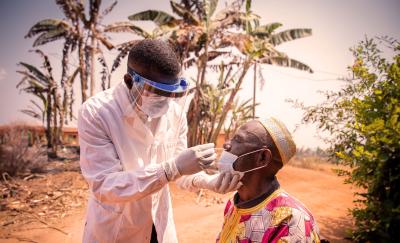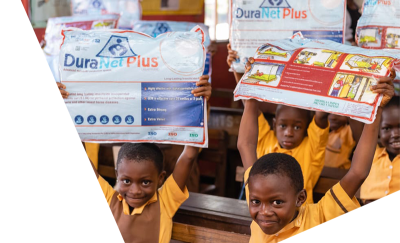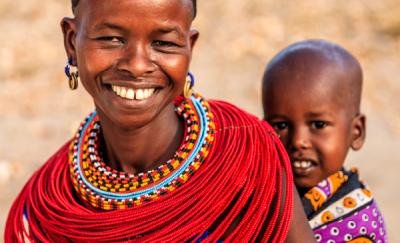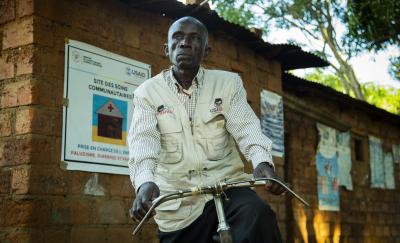With Data, Nurses Guide Communities to Slash Malaria Cases


The Democratic Republic of Congo (DRC) has the second highest number of malaria cases in the world: more than 25 million in 2020 alone. Its 2020-2023 National Strategic Plan for Malaria Control has set targets to slash this caseload by up to half, particularly in provinces where malaria sickness and mortality are high. However, in a country as vast and complex as the DRC, broad efforts require a coordinated, decentralized approach.
In nine southeastern provinces, the Abt-led U.S. Agency for International Development (USAID) Integrated Health Program (USAID IHP) aims to use lessons learned in a promising pilot in Kasaï-Oriental province to put data in the hands of frontline health workers. They will be able to track their progress against local targets that roll up to the national level.
“You have a five-year national target to reduce cases of malaria. However, what should the nurses in health centers and the district health officer do exactly?” asked Constantin Mingahanga, USAID IHP’s health system strengthening specialist for Kasaï-Oriental. “How can we support and follow up on their progress?”
The program developed a strategy that designated milestones for health areas within provinces, including a data tracking system for nurses and a community engagement plan. In Kasaï-Oriental, the program teamed with provincial health districts to train 315 providers in 302 health areas to collect monthly data from community care sites and health centers, analyze it against local targets, and share it to guide community engagement.


One of them is René Lumpunga, a nurse from Nsenda health area in the Mpokolo health zone. Every month, he meets with local providers to collect their data on cases they treated. Then he meets with other nurses from the health zone and neighboring health areas to share data and compare results against previous months. They discuss which interventions have been working in their communities, such as sensitization sessions about insecticide-treated bed nets and community clean-ups to clear out standing water.
These community meetings pay particularly close attention to malaria mortality rates, soliciting community input and assistance to find the source of upward or downward trends and to plot a path forward. As a result, community members are encouraged to hold health facilities accountable. In one meeting in Kasai-Oriental, women from a local community learned about negative malaria mortality trends and demanded increased anti-malarial drug availability for pregnant women.
Finally, Lumpunga runs an “open door” daytime meeting so people—particularly women—can come and go as throughout the day to learn about the presence and treatment of malaria in their communities. He presents the results against Nsenda’s target of a 20 percent annual reduction in cases and answers community members’ questions about malaria incidence.
In 2021, the program expanded the approach to the provinces of Haut-Katanga and Haut-Lomami and will continue to widen the strategy in the coming years. Today, all three provinces use the data tracking tools and continue to engage in community discussions to ensure the data influence interventions. Providers also work jointly with community action groups, who plan prompt activities in response to the malaria data. With Abt’s support to improve facilities’ capacity to collect and harness their data, we are empowering local actors to make sustainable and evolving changes to their health system as new needs arise.
Read More
Infectious Diseases & Global Health Security in Sub-Saharan Africa

Global Health Security: 2024 Year in Review
Abt Global’s top global health security insights from 2024 as we look ahead to 2025.

The 2024 Annual Meeting of the American Society of Tropical Medicine & Hygiene (ASTMH)
Abt Global is presenting and exhibiting at the 2024 Annual Meeting of the American Society of Tropical Medicine & Hygiene (ASTMH).

Global Health Newsletter November 2024
In a Complex Country, What’s Working for Better Health Peru Approves Groundbreaking Law to Extend Health Coverage for Migrants with HIV and TB Furthering Jamaica’s One Health Approach New Evidence for Patient-Centered HIV Service Delivery Approaches in Mozambique Funding Model Helps Bangladesh Expand Primary Health Care Centering Community at the Heart of ITN Distribution Campaigns in Côte d’Ivoire Tackling Antimicrobial Resistance: Integration and Systems Strengthening Spotlighting the Power of Solar for Primary Health in Nigeria’s Off-Grid Communities Global Migration and Health: Beyond a Humanitarian Response Scaling Innovative Locally Led Solutions to Global Health Security Threats in Madagascar Transforming Healthcare Systems in Tanzania Through Digitalization

In a Complex Country, What’s Working for Better Health
The statistics are head-turning: The Democratic Republic of Congo (DRC) has an estimated $24 trillion in untapped mineral deposits, yet the sixth highest poverty rate in the world. Its health outcomes are similarly out of line with its wealth.